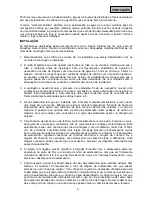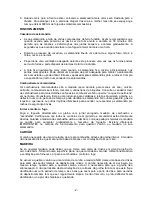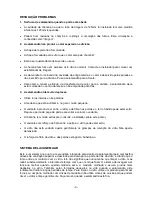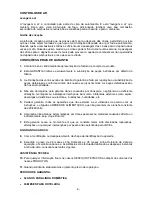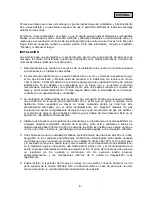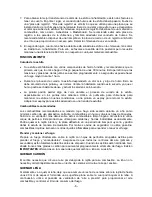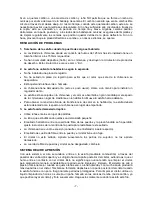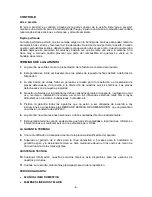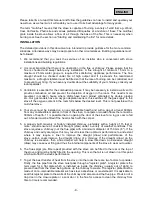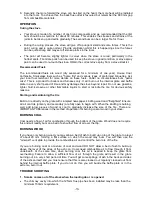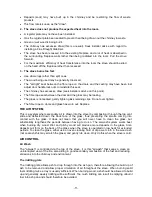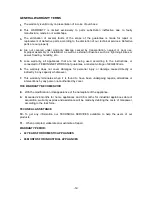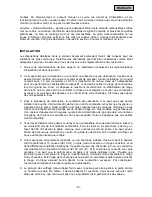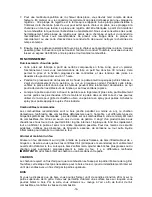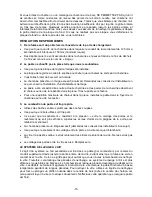
•
Deposits (soot) may have built up in the chimney and be restricting the flow of waste
products.
•
This flow rate is known as the "draw".
2. The stove does not produce the expected heat into the room.
•
A register plate may not have been installed.
•
Has the register plate been sealed to prevent heat being drawn out the chimney to waste.
•
Green or wet wood is being burnt.
•
The chimney has excessive draw (this is unusual). Seek installer advice with regard to
installing a Flue Draught Stabilizer.
•
The stove has been recessed into the existing fireplace and a lot of heat is absorbed in
the surrounding fireplace walls rather than being radiated into the room. Pull the stove
forward.
•
For the maximum efficiency of heat transference into the room the stove should be sited
on the heart off the fireplace rather than recessed
3. The stove burns too fast.
•
Use whole logs rather than split ones.
•
The wood being used may be generally too small.
•
The "air-tight" seal between the fibre rope on the doors and the casting may have been lost,
adjust door handle lock nuts to reinstate this seal.
•
The chimney has excessive draw (seek installers advice on this point).
•
The fibre rope seal between the door and the glass may be leaking.
•
The glass is not sealed; gently tighten glass retaining clips. Do not over tighten.
•
The fibre rope on doors and glass has worn out. Replace.
THE AIR SYSTEM
This is a system where secondary air is drawn into the stove (by combustion) through the top vent
slide and deflected down the back face of the glass, thus preventing the smoke coming into
contact with the glass. II does not mean that you will never have to clean the glass, but
substantially lengthens the periods between having to do so. The air-wash system works best
when burning dry wood. Wet and pitchy wood will produce more deposits in the glass. Also
deposits will form on the back of the glass when the stove is operated on low heat for extended
periods. To clean the glass, either use an oven cleaning fluid or dip a wet cloth in the wood ash
(not coaI ash-this may scratch the glass) and gently rub clean. Only do this when the stove is cold.
AIR CONTROL
Air Wash
The "airwash" is controlled via the top of the stove, it is this "airwash" that keeps a clean an
uninterrupted view of the tire, also aiding in good secondary combustion of the fuel and reducing
emissions into the chimney and environment.
The riddling grate
The riddling grate allows ash to drop through into the ash pan, therefore allowing the build up of
ash to be removed and allow proper circulation of air throughout the stove. When burning solid
fuels riddling twice a day is usually sufficient. When burning wood, ash should be allowed to build
up and generally weekly riddling will be sufficient .Too much riddling can result in emptying unburnt
fuel into ash pan and should therefore be avoided.
-11-


